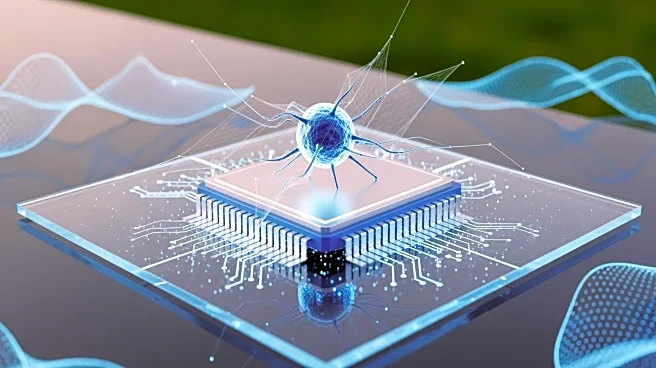What's Happening?
A recent study published in Nature introduces a novel real-time denoising method called FAST, designed to improve the quality of high-speed fluorescence neural imaging. The method integrates an efficient
processing pipeline and a tailored training framework to achieve high-quality denoising across diverse imaging scenarios. FAST employs a spatiotemporal redundancy sampling strategy and a lightweight 2D U-Net architecture to process imaging data efficiently. This approach allows for more accurate and efficient studies of brain function and disease mechanisms by reducing noise in neural imaging data. The system is designed to operate in real-time, ensuring that it does not become a bottleneck in various real-time systems.
Why It's Important?
The introduction of FAST is significant for the field of neuroscience and medical imaging, as it enhances the ability to study brain functions and disease mechanisms with greater accuracy. By providing a method to reduce noise in neural imaging, researchers can obtain clearer images, which are crucial for understanding complex neural activities. This advancement could lead to better diagnostic tools and treatment strategies for neurological disorders. Additionally, the real-time processing capability of FAST ensures that it can be integrated into existing imaging systems without causing delays, making it a practical solution for ongoing research and clinical applications.
What's Next?
The implementation of FAST in various research and clinical settings could lead to widespread improvements in neural imaging quality. Researchers and medical professionals may begin to adopt this technology to enhance their imaging capabilities. Further studies could explore the application of FAST in other imaging modalities or its integration with other advanced imaging techniques. As the technology becomes more widely used, it may also prompt the development of new imaging protocols and standards that leverage the improved image quality provided by FAST.
Beyond the Headlines
The development of FAST also highlights the growing importance of machine learning and artificial intelligence in medical imaging. By utilizing a self-supervised learning approach, FAST demonstrates how AI can be used to solve complex problems in real-time, paving the way for future innovations in the field. This advancement may encourage further research into AI-driven solutions for other challenges in medical imaging and diagnostics.











